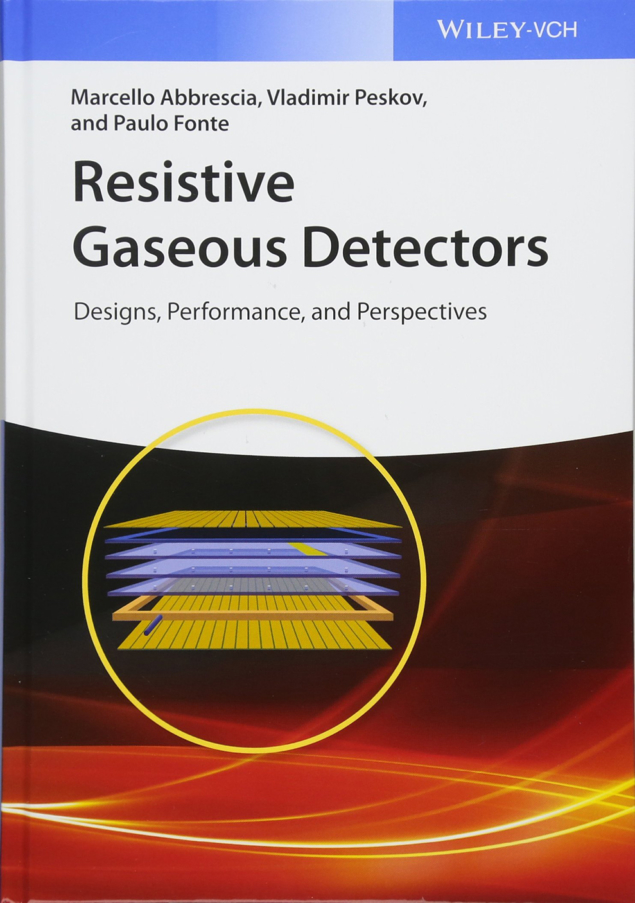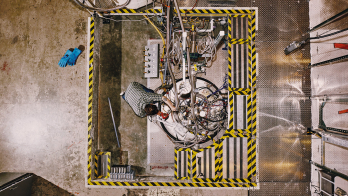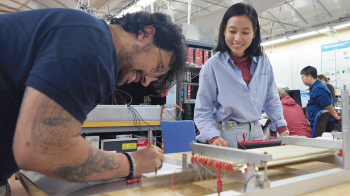Resistive Gaseous Detectors: Designs, Performance, and Perspectives, by Marcello Abbrescia, Vladimir Peskov and Paolo Fonte, Wiley

The first truly resistive gaseous detector was invented by Rinaldo Santonico and Roberto Cardarelli in 1981. A kind of parallel-plate detector with electrodes made of resistive materials such as Bakelite and thin-float glass, the design is sometimes also known as a resistive-plate chamber (RPC). Resistive gaseous detectors use electronegative gases and electric fields that typically exceed 10 kV/cm. When a charged particle is incident in the gas gap, the working operational gas is ionised, and primary electrons cause an avalanche as a result of the high electric field. The induced charge is then obtained on the readout pad as a signal. RPCs have several unique and important practical features, combining good spatial resolution with a time resolution comparable to that of scintillators. They are therefore well suited for fast spacetime particle tracking, as a cost-effective way to instrument large volumes of a detector, for example in muon systems at collider experiments.
Resistive gaseous detectors use electronegative gases and electric fields which typically exceed 10 kV/cm
Resistive Gaseous Detectors: Designs, Performance, and Perspectives, a new book by Marcello Abbrescia, Vladimir Peskov and Paulo Fonte, covers the basic principles of their operation, historical development, the latest achievements and their growing applications in various fields from hadron colliders to astrophysics. This book is not only a summary of numerous scientific publications on many different examples of RPCs, but also a detailed description of their design, operation and performance.

The book has nine chapters. The operational principle of gaseous detectors and some of their limitations, most notably the efficiency drop in a high-particle-rate environment, are described. This is followed by a history of parallel-plate detectors, the first classical Bakelite RPC, double-gap RPCs and glass-electrode multi-gap timing RPCs. A modern design of double-gap RPCs and examples for the muon systems like those at ATLAS and CMS at the LHC, the STAR detector at the Relativistic Heavy-Ion Collider at Brookhaven and the multi-gap timing RPC for the time-of-flight system of the HADES experiment at GSI are detailed. Advanced designs with new materials for electrodes for high-rate detectors are then introduced, and ageing and longevity are elaborated upon. A new generation of gaseous detectors with resistive electrodes that can be made with microelectronic technology is then introduced: these large-area electrodes can easily be manufactured while still achieving high spatial resolutions up to 12 microns.
Homeland security
The final chapter covers applications outside particle physics such as those in medicine exploiting positron-emission tomography. For homeland security, RPCs can be used in muon-scattering tomography with cosmic-ray muons to scan spent nuclear fuel containers without opening them, or to quickly scan incoming cargo trucks without disrupting the traffic of logistics. A key subject not covered in detail, however, is the need to search for environmentally friendly alternatives to gases with high global-warming potential, which are often needed in resistive gaseous detectors at present to achieve stable and sustained operation (CERN Courier July/August 2021 p20).
Abbrescia, Peskov and Fonte’s book will be useful to graduates specialising in high-energy physics, astronomy, astrophysics, medical physics and radiation measurements in general for undergraduate students and teachers.








